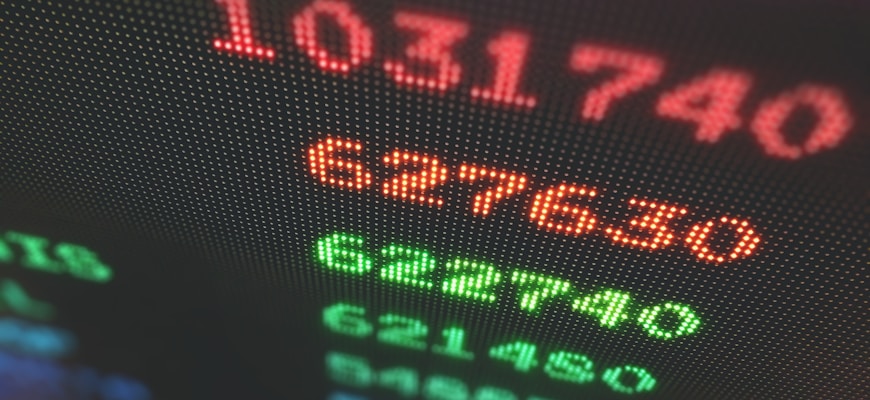How to Use Technical Analysis to Time Your Crypto Trades

- Understanding the basics of technical analysis in the cryptocurrency market
- Identifying key indicators for successful timing of crypto trades
- Utilizing chart patterns to predict price movements in the crypto market
- Implementing support and resistance levels in your trading strategy
- Using moving averages to confirm trends and make informed trading decisions
- Avoiding common pitfalls when applying technical analysis to crypto trading
Understanding the basics of technical analysis in the cryptocurrency market
When it comes to navigating the volatile cryptocurrency market, technical analysis can be a valuable tool for traders. Technical analysis involves studying past market data, primarily price and volume, to forecast future price movements. By identifying patterns and trends in the data, traders can make more informed decisions about when to buy or sell.
One of the key principles of technical analysis is that price movements are not random but rather follow a pattern. This means that by analyzing historical price data, traders can identify trends and patterns that may indicate future price movements. Some common technical analysis tools include moving averages, support and resistance levels, and chart patterns.
It’s important to note that technical analysis is not foolproof and should be used in conjunction with other forms of analysis, such as fundamental analysis. However, many traders find technical analysis to be a valuable tool for timing their trades and managing risk in the cryptocurrency market.
Identifying key indicators for successful timing of crypto trades
When it comes to timing your crypto trades using technical analysis, there are several key indicators to consider. These indicators can help you make more informed decisions and increase the likelihood of successful trades. One important indicator to look at is the moving average convergence divergence (MACD). The MACD is a trend-following momentum indicator that shows the relationship between two moving averages of a security’s price. By analyzing the MACD, you can identify potential buy or sell signals based on crossovers and divergences.
Another key indicator to consider is the relative strength index (RSI). The RSI is a momentum oscillator that measures the speed and change of price movements. It can help you determine whether a particular cryptocurrency is overbought or oversold, which can indicate potential reversal points. By using the RSI in conjunction with other indicators, you can confirm signals and make more accurate trading decisions.
Volume is also an important indicator to keep an eye on when timing your crypto trades. Volume represents the number of tokens or coins traded within a specific period. An increase in volume can indicate strong market participation and validate a price movement, while low volume may signal a lack of interest and potential price reversal. By analyzing volume along with other indicators, you can gain a more comprehensive understanding of market dynamics and make more strategic trades.
Utilizing chart patterns to predict price movements in the crypto market
Chart patterns are essential tools for predicting price movements in the crypto market through technical analysis. By analyzing historical price data, traders can identify recurring patterns that indicate potential future price movements.
One common chart pattern is the “head and shoulders,” which consists of three peaks with the middle peak being the highest. This pattern typically signals a trend reversal, with prices expected to decline after the formation is complete.
Another popular pattern is the “cup and handle,” which resembles a tea cup followed by a small handle. This pattern indicates a bullish continuation, with prices likely to rise after a period of consolidation.
Traders can also look for “triangles,” which are formed by converging trendlines. A “symmetrical triangle” suggests a period of consolidation before a breakout, while an “ascending triangle” indicates a bullish continuation, and a “descending triangle” suggests a bearish continuation.
Overall, mastering the art of recognizing and interpreting chart patterns can give traders a significant edge in predicting price movements and making informed decisions in the volatile crypto market.
Implementing support and resistance levels in your trading strategy
One effective way to enhance your crypto trading strategy is by implementing support and resistance levels. These levels indicate the points at which the price of an asset is likely to encounter barriers as it moves up or down. By identifying these levels, traders can make more informed decisions about when to enter or exit a trade.
Support levels are price points where the asset tends to find buying interest, preventing it from falling further. Resistance levels, on the other hand, are price points where the asset faces selling pressure, halting its upward momentum. By paying attention to these levels, traders can anticipate potential price movements and adjust their strategies accordingly.
To incorporate support and resistance levels into your trading strategy, start by analyzing historical price charts to identify key levels where the price has reversed in the past. You can then use this information to set entry and exit points for your trades. Additionally, consider using technical indicators such as moving averages or Fibonacci retracement levels to confirm the validity of these support and resistance levels.
Remember that support and resistance levels are not set in stone and can shift over time as market conditions change. It’s essential to continuously monitor price movements and adjust your strategy accordingly to stay ahead of the curve. By incorporating support and resistance levels into your trading strategy, you can make more informed decisions and improve your overall trading performance in the crypto market.
Using moving averages to confirm trends and make informed trading decisions
One of the key tools used in technical analysis to time your crypto trades is the moving average. Moving averages help traders confirm trends and make informed decisions by smoothing out price data over a specified period of time. By analyzing moving averages, traders can better understand the direction of the market and the strength of a trend.
There are two main types of moving averages that traders commonly use: the simple moving average (SMA) and the exponential moving average (EMA). The SMA calculates the average price of an asset over a specific number of periods, while the EMA gives more weight to recent price data. Both types of moving averages can be used to identify trends and potential entry and exit points for trades.
When using moving averages to confirm trends, traders look for crossovers between different moving averages. For example, when a short-term moving average crosses above a long-term moving average, it is often seen as a bullish signal. Conversely, when a short-term moving average crosses below a long-term moving average, it is considered a bearish signal.
By paying attention to moving average crossovers and the relationship between different moving averages, traders can gain valuable insights into the direction of the market and make more informed trading decisions. It is important to note that moving averages should be used in conjunction with other technical analysis tools to confirm trends and avoid false signals.
Avoiding common pitfalls when applying technical analysis to crypto trading
When applying technical analysis to crypto trading, it’s important to be aware of common pitfalls that can hinder your success. By understanding these pitfalls, you can avoid making costly mistakes and improve your trading strategy.
- One common pitfall to watch out for is relying too heavily on a single indicator. While indicators can be useful tools for analyzing market trends, using only one can lead to inaccurate predictions. It’s best to use a combination of indicators to get a more comprehensive view of the market.
- Another pitfall is ignoring the bigger picture. It’s easy to get caught up in the minute-to-minute fluctuations of the market, but it’s essential to step back and look at the overall trend. By focusing on the bigger picture, you can make more informed trading decisions.
- Additionally, falling victim to confirmation bias can be detrimental to your trading strategy. This occurs when you only look for information that confirms your existing beliefs, ignoring any evidence to the contrary. To avoid confirmation bias, remain open-minded and consider all available data.
- Lastly, emotional trading can lead to poor decision-making. It’s essential to remain disciplined and stick to your trading plan, rather than letting emotions dictate your actions. By staying rational and level-headed, you can avoid impulsive trades that may result in losses.
By being aware of these common pitfalls and taking steps to avoid them, you can improve your technical analysis skills and make more informed decisions when trading cryptocurrencies.



